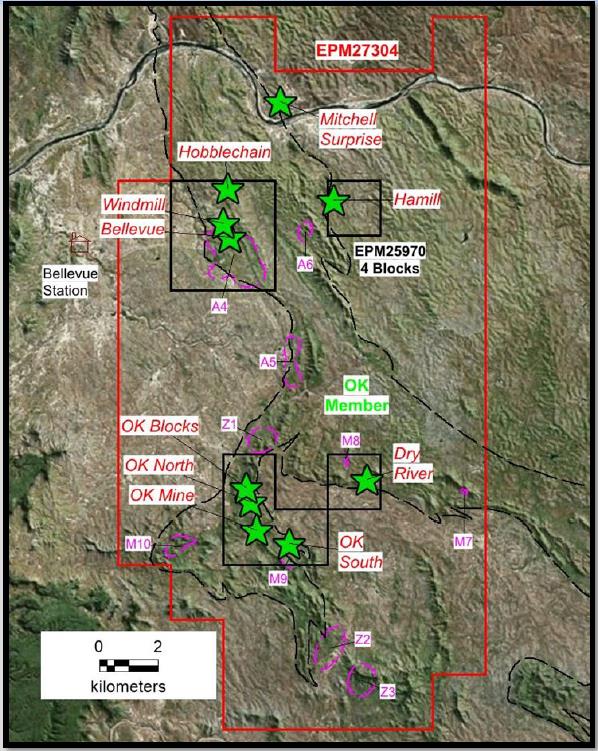Bellevue/Dry River Project
Bellevue Copper-Gold and Dry River Project
The Bellevue and Dry River copper-gold projects form part of a substantial tenement holding lying north of our Tartana mining leases.
The geology is complex and the tenements cover a prospective chert-basalt contact within the OK Member stratigraphy within the Hodgkinson Formation. This contact hosts numerous copper occurrences which have been partially exploited by small time miners. Chert is present in the Chillagoe belt and on the Tartana leases with several explorers (including Tartana) interpreting the chert as an alteration feature.
The OK Member is a narrow, elongate, fault-bounded, chert dominated belt on the eastern margin of the Kitoba Member and is structurally intercalated with undivided Hodgkinson Formation to the northeast.
Copper-oxide enriched gossans are most commonly seen within OK Member rocks. In the cluster of VMS deposits around the OK Mine, VMS mineralisation consistently occurs at the transition from pillow basalt dominant zones to sediment/chert dominant horizons. A red/black jasper is also reported to be commonly spatially related to this “Mine Sequence” mineralisation.

Prospect Locations – Bellevue/Dry River Copper-Gold Project
There are over 1.8 km of gossan exposures hosted in the prospective OK Member stratigraphy within the Hodgkinson Formation and these cover 10 separate prospect areas with drill targets.
The most significant historical mining has occurred at the OK Mines where a township was located and centred on copper mining and smelting operations. The copper mineralisation at the OK Mine remains open at depth.
The maps below highlight the number of prospects and old mines along the boundary. Historical rock chip sampling has returned up to 27 g/t Au and 31% Cu and while these are likely to be supergene enriched, follow up exploration on most prospects has generally been sporadic and inconclusive.
Exploration Activities
In 2021 Tartana completed a 1093-line kilometre Falcon Gravity/Magnetic survey which identified a number of targets and enhanced several prospects with previously unknown geological features. In addition, a prospective belt of southeast trending

